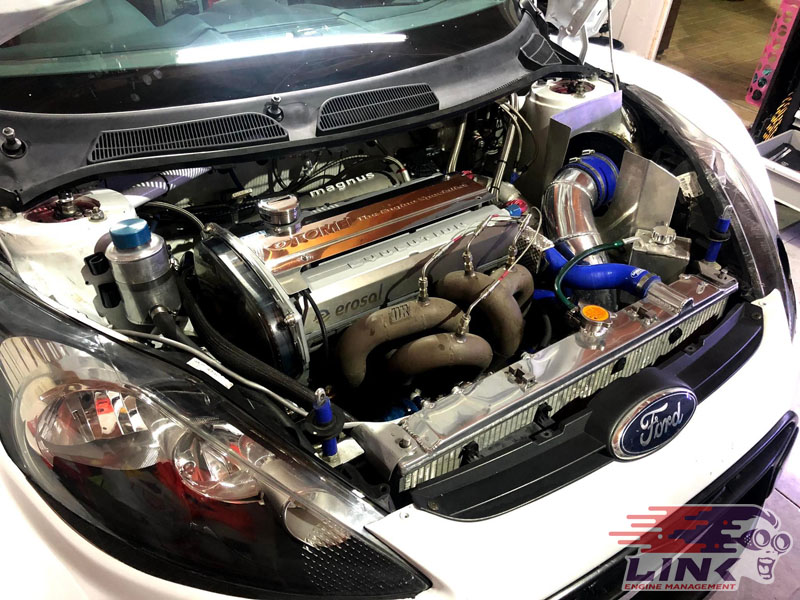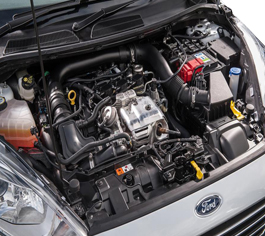How a Well-Maintained Ford Fiesta Engine Improves Vehicle Longevity
How a Well-Maintained Ford Fiesta Engine Improves Vehicle Longevity
Blog Article
Opening the Power of Engines: A Comprehensive Guide to Efficiency and Efficiency
Recognizing the detailed mechanics of engines is essential for both performance enthusiasts and everyday drivers. The answers may redefine our approach to engine efficiency and performance in means that are both informing and necessary.
Recognizing Engine Fundamentals
What makes up the essential mechanics of an engine? At its core, an engine is a machine designed to convert fuel right into mechanical power via a collection of controlled explosions or burning procedures. The primary parts include the cyndrical tube, piston, crankshaft, camshaft, and shutoffs. The cylinder acts as the chamber where burning takes place, while the piston moves within the cylinder to transform the energy from combustion right into direct motion (ford fiesta engine).
The crankshaft then changes this linear activity into rotational energy, which inevitably powers the car. The camshaft controls the opening and closing of the shutoffs, regulating the consumption of air and fuel and the expulsion of exhaust gases. In addition, the engine counts on a meticulously calibrated fuel-air mixture, ignition system, and cooling down system to guarantee optimal efficiency and efficiency.
Recognizing engine essentials likewise involves identifying the importance of engine cycles, such as the four-stroke cycle, that includes intake, compression, exhaust, and power strokes. Each phase is important in ensuring the engine works efficiently and effectively. Mastery of these basic mechanics lays the foundation for exploring a lot more complex engine dynamics and efficiency metrics, essential for enhancing both power result and efficiency.
Trick Performance Metrics
Secret efficiency metrics are important for evaluating an engine's effectiveness and power result, offering useful insights for both consumers and makers. These metrics function as benchmarks for engine performance, permitting informed decisions in manufacturing, investing in, and design.
One of the main metrics is horse power, which measures the engine's capability to do job over time. Torque, gauged in pound-feet, is another important metric that suggests the engine's rotational force, directly affecting velocity and lugging ability. Gas effectiveness, normally determined in miles per gallon (MPG) or liters per 100 kilometers (L/100km), evaluates how effectively the engine transforms gas into motion, impacting environmental factors to consider and functional expenses.
Furthermore, thermal effectiveness steps how well an engine transforms gas energy into valuable job, exposing insights into power losses largely via warm. Emission degrees, consisting of carbon dioxide and NOx, are likewise vital, reflecting the engine's ecological effect and compliance with regulative standards.

Tuning Methods for Performance
Tuning techniques play a significant function in improving engine effectiveness by maximizing efficiency metrics recognized in earlier conversations (ford fiesta engine). Different techniques exist to adjust an engine, each adding to boosted fuel economic situation and lowered exhausts
One efficient method is changing the air-fuel ratio, guaranteeing the engine operates within the optimal burning regime. A leaner mixture can boost gas performance, however it should be balanced to avoid misfires or engine knock. Additionally, reprogramming the engine management system can rectify criteria such as ignition timing, which better boosts effectiveness while preserving power output.
An additional crucial technique includes modifying the consumption and exhaust systems. Updating to high-performance air filters and exhaust headers can minimize back pressure, facilitating better air movement. This permits the engine to breathe more openly, bring about boosted burning effectiveness.
In addition, the implementation of advanced adjusting devices, like dyno testing, provides precise you could try this out information that allows targeted adjustments. Regularly checking these efficiency metrics guarantees that tuning initiatives generate the desired performance outcomes. Jointly, these strategies not only bolster engine efficiency however likewise add to long-lasting sustainability go right here in engine operations.
Upkeep for Optimal Efficiency
Normal engine upkeep is necessary for accomplishing optimal efficiency and longevity. A well-maintained engine not just operates efficiently yet likewise decreases the danger of expensive repair work and break downs. Trick elements requiring routine attention consist of oil, filters, belts, and stimulate plugs.
Transforming the engine oil at recommended periods is critical, as oil lubricates relocating components and stops overheating. Replacing oil and air filters guarantees that pollutants do not harm engine feature. Neglecting these elements can cause lowered efficiency and potential engine damage.
Additionally, checking and changing used belts and tubes is essential to stop sudden failures. Timing belts, specifically, ought to be replaced according to the maker's routine to prevent tragic engine damages.
Ignition system need to also be inspected and replaced as needed, given that they play a vital role in ignition and fuel effectiveness.
Future Patterns in Engine Modern Technology
Accepting advancements in innovation, the future of engine layout is poised to reinvent efficiency and performance throughout various applications. Among one of the most significant fads is the change toward electrification. Hybrid and fully electrical powertrains are becoming increasingly mainstream, providing decreased discharges and improved gas effectiveness. This change is not merely a necessity but a trend driven by regulatory pressures and customer demand for lasting solutions.
Moreover, technologies in products scientific research are leading to lighter, stronger components that enhance engine efficiency while lowering power intake. Advanced manufacturing strategies, such as 3D printing, enable the production of complicated geometries that boost airflow and thermal administration, hence optimizing burning procedures.
Additionally, the combination of expert system and artificial intelligence is set to change recommended you read engine diagnostics and efficiency tuning. These modern technologies can analyze huge quantities of data in actual time, enabling predictive upkeep and customized performance enhancements.
Final Thought
To conclude, opening the power of engines requires a comprehensive understanding of their technicians and performance metrics. Executing reliable adjusting techniques and adhering to routine upkeep methods dramatically enhance engine abilities. As the auto landscape evolves, accepting future fads in technology, including electrification and advanced manufacturing, will be essential for enhancing efficiency and effectiveness. This extensive technique not only benefits lovers however also contributes to sustainable solutions in the realm of automotive engineering.
Furthermore, the engine counts on a meticulously calibrated fuel-air blend, ignition system, and cooling system to guarantee optimal efficiency and efficiency.
Comprehending engine fundamentals also entails acknowledging the significance of engine cycles, such as the four-stroke cycle, which consists of intake, power, exhaust, and compression strokes. Mastery of these essential mechanics lays the foundation for exploring a lot more complex engine dynamics and efficiency metrics, crucial for maximizing both power outcome and effectiveness.

Welcoming developments in innovation, the future of engine style is positioned to change efficiency and performance throughout numerous applications.
Report this page